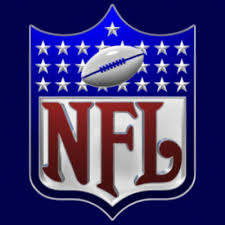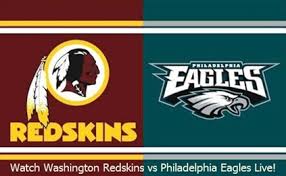
 |
Watch live streaming nfl tv
 Watch live streaming nfl tv
Watch live streaming nfl tvNFL
United States
The National Football league called NFL.
Tampa Bay Buccaneers vs Washington Redskins
Match scheduled:
Last updated: 04-10-2009 from 17:00 until 20:30
02-10-2009 on 10:36
Week 4 :: NFL Regular Season 2009/2010

 |
In their early years in Washington, the Redskins shared Griffith Stadium with the Washington Senators baseball team.[13] In 1937, they signed an innovative rookie quarterback from Texas Christian University, Sammy Baugh.[6] In an era where the forward pass was relatively rare, the Redskins used it as their primary method of gaining yards. "Slingin' Sammy" Baugh also played numerous other positions, including cornerback and punter.

 |
With Sammy Baugh at the helm, the Redskins won the Eastern Division title and went back to the NFL Championship game in their first year in the Nation's Capital. The 1937 NFL Championship game pitted them against the Chicago Bears. Sammy Baugh threw three touchdown passes and the Redskins prevailed, 28–21.[14] The two teams would meet again in the 1940 Championship, and the Bears handed the Redskins the most lopsided defeat in NFL history, 73–0.[14] The Redskins struck back in 1942, as George Preston Marshall used the 1940 humiliation as a rallying point and the Redskins upset the Bears to spoil their try for a perfect season, 14–6.[14] The teams clashed again the following season and the Bears would even the series at 2-2, capturing the 1943 NFL title, 41-21.[14] The Redskins challenged for the NFL title again in 1945, but fell a point short to the Cleveland Rams, 15-14.[14]

 |
[edit] Integration and front-office
The team's early success endeared it to the fans of Washington, D.C. However, after 1945, the Redskins began a slow decline. This was in part because of Marshall's tendency to micromanage the team. From 1946 to 1968, the Redskins had only three winning seasons.[11]

 |
Marshall refused to integrate the team, despite pressure from the Washington Post and the Federal Government (a typical comment by Post writer Shirley Povich was "Cleveland Browns runner Jim Brown integrated the Redskins' end zone three times").[15]

 |
Finally, in 1962, Interior Secretary Stewart Udall gave the Redskins an ultimatum--unless they signed a black player, the government would evict them from the year-old District of Columbia Stadium.[16] As a result, the Redskins became the final pro football franchise to integrate, in 1962, its second season in the stadium. First, the team drafted Ernie Davis, the first black player to win the Heisman Trophy.[16] Then, before signing Davis, they traded his rights to the Browns for wide receiver Bobby Mitchell.[16] It turned out that Davis had leukemia and died without ever playing a down in professional football. Mitchell, however, was still in the first half of a career that would land him in the Pro Football Hall of Fame.[16

 |
Mitchell would be joined by black stars such as receiver Charley Taylor, running back Larry Brown (who had a hearing aid installed in his helmet due to near-total deafness), and defensive back Brig Owens. They would also pull off two of the best trades of the 1960s, gaining colorful quarterback Sonny Jurgensen from the Philadelphia Eagles and linebacker Sam Huff from the New York Giants.[17] But even with these additions, the Redskins were still not performing up to expectations. Although the team became more popular than ever, particularly with the addition of Mitchell, they struggled through the 1960s.

 |
In the front office, Marshall had been forced to reduce his duties due to a mental decline in 1962, and the team's other stockholders found it difficult to make decisions without their boss. Marshall died in 1969, and the remaining stockholders sold the team to Edward Bennett Williams, a Washington resident and one of America's most esteemed attorneys.[18]
Also in 1969, D.C. Stadium was renamed Robert F. Kennedy Memorial Stadium, and the Redskins hired Vince Lombardi — who gained fame coaching with the Green Bay Packers — to be their new head coach.[19] Lombardi led the team to a 7–5–2 record,[11] their best since 1955, but died of cancer on the eve of the 1970 season.[19]
[edit] Revival

 |
Two years later, Williams signed former Los Angeles Rams head coach George Allen as head coach. Partial to seasoned veterans instead of highly touted young players, Allen's teams became known as the Over-the-Hill Gang. "The future is now" was his slogan, and his players soon proved him right.[20]
Allen helped to foster the team's rivalry with the Dallas Cowboys, which has turned into one of the NFL's most heated matchups.[21] The Redskins reached the NFC Conference Championship in the 1972 season, defeating Dallas 26–3,[14] only to lose to the undefeated Miami Dolphins 14–7 in Super Bowl VII.[14] In his seven years as head coach, Allen's teams made the playoffs five times.[22

 |
In 1981, new Redskins owner Jack Kent Cooke signed the offensive coordinator of the San Diego Chargers, Joe Gibbs, as their 20th head coach. He coached the team to four Super Bowls, winning three of them.[23]
Quarterback Joe Theismann, running back John Riggins, and receiver Art Monk got most of the publicity, but the Redskins were one of the few teams ever to have a famous offensive line. Offensive Line coach Joe Bugel, who would later go on to be the head coach of the Phoenix Cardinals, nicknamed them "The Hogs," not because they were big and fat, but because they would "root around in the mud" on the field.[24] The "original" Hogs were made up of center Jeff Bostic, guards Russ Grimm and Mark May, and tackles Joe Jacoby and George Starke.[25] In later years other notables such as Jim Lachey, Raleigh McKenzie, and Mark Schlereth were also part of the famous line. Tight ends Don Warren and Clint Didier, as well as Riggins, were known as "Honorary Hogs."

 |
The Redskins' first Super Bowl win, their first NFL Championship in 40 years, was in Super Bowl XVII, where the Redskins beat the Miami Dolphins 27-17 on January 30, 1983, in Pasadena, California.[14] John Riggins provided the game's signature play when, on 4th and inches, with the Redskins down 17–13, the coaches called "70 Chip" a play designed for short yardage.[26] Riggins instead gained 43 yards and the go-ahead touchdown. The image of Riggins running through would-be tackler Don McNeal has become one of the all-time Super Bowl highlights. One touchdown later, the Redskins won their first Super Bowl title by a 27–17 score.

 |
 |  |  |  |  |

 |
The Redskins' 1983 season began with a loss to the Dallas Cowboys 31–30 on the Monday Night Football season opener despite a 23-3 halftime lead over the Cowboys,[27] but they lost only one more game in the regular season (also a Monday Night game, vs. Green Bay, by a score of 48–47[27]), as they dominated the National Football League with a 14-win season that included scoring a then NFL record of 541 points[28], many of which came as a result of John Riggins' 24 touchdowns. In the postseason, the Redskins defeated the Los Angeles Rams 51–7.[14] The next week, they cruised to a 21–0 lead over the San Francisco 49ers after 3 quarters in the NFC Champonship Game, but the Redskins' weakness that season was their defense (they allowed 332 points that season). The 49ers fired off 3 touchdowns to tie the game. But Mark Moseley, who had missed 4 field goals, made the one that counted as the 'Skins beat the 49ers 24–21.[14] It would be Washington's last win of the season because two weeks later, the Raiders beat the Redskins 38–9 in Super Bowl XVIII.[14

 |
+copy.jpg) |  |  |  |  |
The 1987 season began with a 24-day players' strike, reducing the 16-game season to 15. The games for weeks 4-6 were won with all replacement players. The Redskins have the distinction of being the only team with no players crossing the picket line.[29] Those three victories are often credited with getting the team into the playoffs and the basis for the 2000 movie The Replacements. The Redskins won their second championship in Super Bowl XXII on January 31, 1988, in San Diego, California. The Redskins routed the Denver Broncos 42-10[14] after falling behind 10–0 early in the first quarter. This was the largest come-from-behind victory in Super Bowl history. This game is more famous for the stellar performance by quarterback Doug Williams, who passed for four touchdowns in the second quarter en route to becoming the first black quarterback to lead his team to a Super Bowl victory.[30] Rookie running back Timmy Smith had a great performance as well, running for a Super Bowl record 204 yards.[30

 |
Watch live streaming nfl tv
 Watch live streaming nfl tv
Watch live streaming nfl tv
















